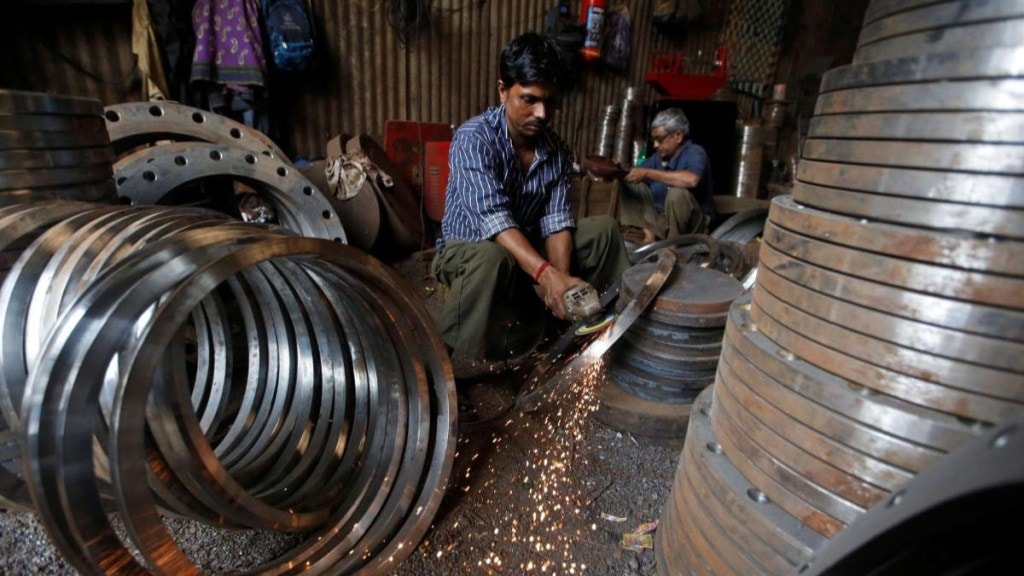– By Shridatta Bhandwaldar
India, an economy with a rising working age population is well positioned to become an attractive investment destination over the years to come. With favourable policy reforms like undertaking initiatives to incentivise domestic manufacturing, labour reforms and ease of doing business, India has the potential to become the next manufacturing hub. India’s per capita GDP is expected to reach USD 3,000 mark by FY25.
India’s manufacturing sector holds immense potential as a catalyst for economic growth, job creation, and technological advancement. The rising income levels may lead to high demand for manufactured goods. The investments through PLI schemes have crossed Rs. 1.03 lakh crore which has led to massive direct and indirect employment generation of about 3,822,730. Keeping in view India’s vision of becoming ‘Atmanirbhar’. The implementation of the PLI schemes for 14 sectors aims to improve India’s manufacturing and export capacities.
The capital expenditure push of Rs. 21.6 trillion in FY23 by the central and state governments and listed corporates have contributed to the development of this sector. This figure is expected to reach Rs. 25.8 trillion in FY24 . Corporate leverage is at a 15-year low. The share of US imports from India has surpassed that of China. India’s share in the global merchandise exports stands at 1.9% as on Dec’22 . Our domestic exports have seen an uptrend in recent times.
Growth of the sector
India has experienced significant growth in industrial production, with the manufacturing sector playing a pivotal role. The Index of Industrial Production (IIP) reflects a positive trend, showcasing the sector’s resilience and capacity for expansion. This growth is indicative of the increasing demand for manufactured goods both domestically and internationally.
Government initiatives such as “Make in India” and the Production Linked Incentive (PLI) scheme, aim to attract investments, promote innovation, and enhance the overall competitiveness of the Indian manufacturing sector. With a large pool of skilled and semi-skilled labor, the sector can contribute to reducing unemployment rates and uplifting the socio-economic status of the workforce.
Turnaround in the sector
The share of the manufacturing sector (mining and quarrying, electricity, water supply, and gas sectors) has been flat in the last four decades. There is also a current account imbalance, resulting in a weaker currency. India is expected to have a working-age population of about 1 billion by the year 2030 .
The middle-class population in India is estimated to have the second-largest share in global consumption, at 17%, by 2030. By 2030, India is expected to export commodities valued at $1 trillion USD. The manufacturing industry employs about 27.3 million people and contributes 17% of India’s GDP. The Electronics System Design and Manufacturing (ESDM) sector in India has received momentum from programs like Make in India, Digital India and Startup India. Numerous luxury and auto brands, mobile phone companies, among others, are looking to set up their manufacturing operations in India. By 2025, India’s manufacturing sector could potentially be worth $1 trillion USD.
The Ministry of Heavy Industries & Public Enterprises of the Government of India has launched several programs, one of which is SAMARTH Udyog Bharat 4.0, also known as SAMARTH Advanced Manufacturing and Rapid Transformation Hubs. It is anticipated that this will boost the industrial sector’s competitiveness in the market for capital goods. All these factors are instrumental in the growth and turnaround of this sector.
(Shridatta Bhandwaldar is the Head Equities at Canara Robeco Mutual Fund.)
(Disclaimer: Views expressed are personal and do not reflect the official position or policy of Financial Express Online. Reproducing this content without permission is prohibited.)
